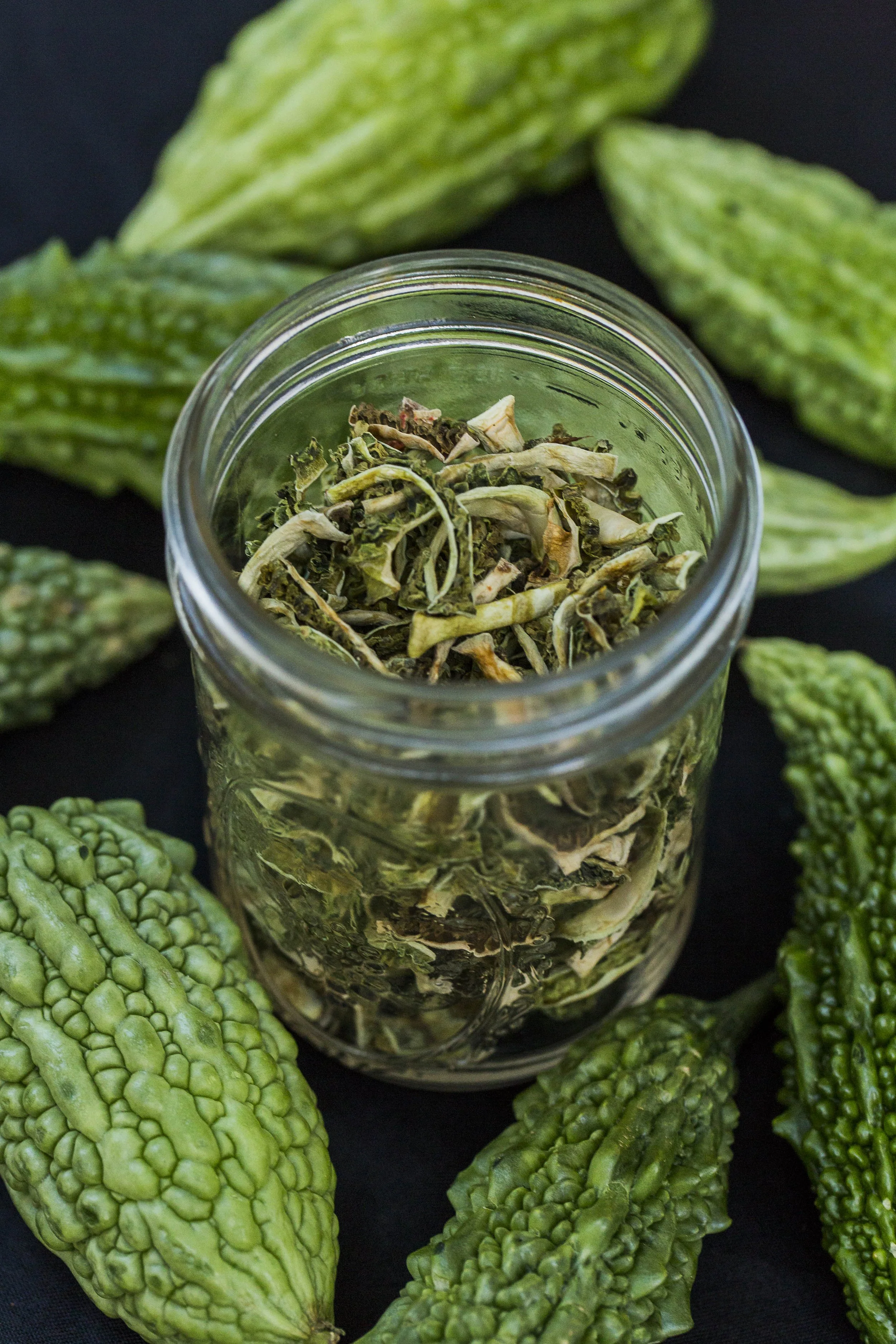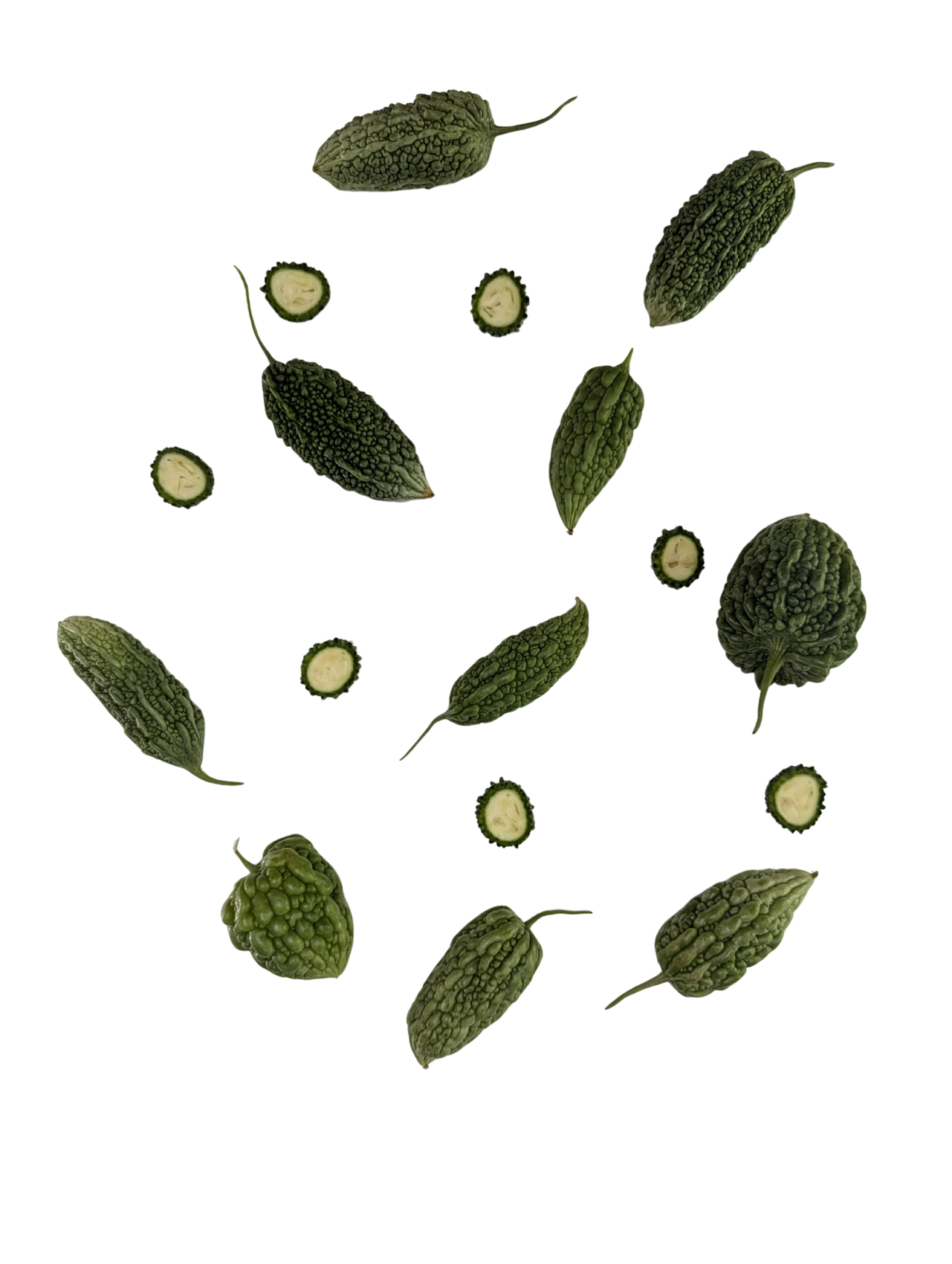
Bitter MeloN
Fun Facts
Plant Family: Cucurbitaceae
Botanical Name: Momordica charantia
Botanical Origin: wild origin in Africa, domestication & wide cultivation in Asia.
Common Names: Ampalaya (Philippines), balam-pear/balsam-pear, bitter apple, bitter gourd, bitter melon, bitter squash, Caraille/Carilley (Trinidad & Tobago), goya (Japan, Okinawa), karavila (Sri Lanka), karela (India/Pakistan), kǔguā (苦瓜, China), mara (Thailand), mướp đắng/khổ qua (Vietnam), margose (‘margoze’) (Africa/Indian Ocean), pare/paria (Indonesia)
Edible Parts: Unripe or immature fruit (cooked in green or early yellowing stage); young shoots and leaves are also occasionally consumed as greens
Bitter melon is much loved in many cultures, but relatively unknown in others. In Western North Carolina, we’ve found that it’s a crop that quickly wins people over if given a chance and cooked right! Bitter melon with eggs, pickled bitter melon, dried bitter melon for teas, or juiced bitter melon for mocktails - it’s really versatile, and really good for you.
We may not consider bitter melon a top crop if it suffers from all the other pests and diseases that plague our more common squash family crops (summer and winter squash, melons, and cucumbers). But bitter melon grows unfazed and continues to produce ample fruit until frost.


